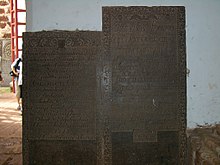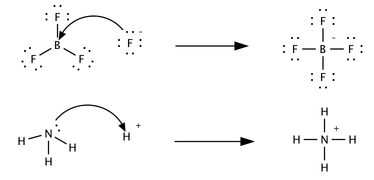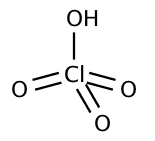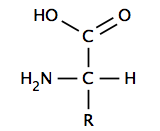 | |
| Former type | Public company |
|---|---|
| Industry | Trade |
| Fate | Bankruptcy |
| Founded | 20 March 1602 |
| Defunct | 17 March 1798 |
| Headquarters | East India House, Amsterdam, Holland, Dutch Republic |
The shipyard of the Dutch East India Company in Amsterdam, circa 1750.
Statistically, the VOC eclipsed all of its rivals in the Asia trade. Between 1602 and 1796 the VOC sent almost a million Europeans to work in the Asia trade on 4,785 ships, and netted for their efforts more than 2.5 million tons of Asian trade goods. By contrast, the rest of Europe combined sent only 882,412 people from 1500 to 1795, and the fleet of the English (later British) East India Company, the VOC’s nearest competitor, was a distant second to its total traffic with 2,690 ships and a mere one-fifth the tonnage of goods carried by the VOC. The VOC enjoyed huge profits from its spice monopoly through most of the 17th century.
Having been set up in 1602, to profit from the Malukan spice trade, in 1619 the VOC established a capital in the port city of Batavia (now Jakarta). Over the next two centuries the Company acquired additional ports as trading bases and safeguarded their interests by taking over surrounding territory. It remained an important trading concern and paid an 18% annual dividend for almost 200 years. Weighed down by corruption in the late 18th century, the Company went bankrupt and was formally dissolved in 1800, its possessions and the debt being taken over by the government of the Dutch Batavian Republic. The VOC's territories became the Dutch East Indies and were expanded over the course of the 19th century to include the whole of the Indonesian archipelago, and in the 20th century would form Indonesia.
History
See also: Dutch East India Company in Indonesia and Economic History of the Netherlands (1500 - 1815)
Background
During the 16th century, the Spice trade was dominated by the Portuguese who used Lisbon as a staple port. Before the Dutch Revolt, Antwerp had played an important role as a distribution center in northern Europe, but after 1591 the Portuguese used an international syndicate of the German Fuggers and Welsers, and Spanish and Italian firms that used Hamburg as its northern staple, to distribute their goods, thereby cutting out Dutch merchants. At the same time, the Portuguese trade system was unable to supply growing demand, in particular the demand for pepper. The demand for spices was relatively inelastic, and the lagging supply of pepper therefore caused a sharp rise in pepper prices at the time.Likewise, as Portugal had been "united" with the Spanish crown, with which the Dutch Republic was at war, in 1580, the Portuguese Empire became an appropriate target for military incursions. These three factors formed motive for Dutch merchants to enter the intercontinental spice trade themselves at this time. Finally, a number of Dutchmen like Jan Huyghen van Linschoten and Cornelis de Houtman obtained first hand knowledge of the "secret" Portuguese trade routes and practices, thereby providing opportunity. The stage was thus set for Houtman's four-ship exploratory expedition to Banten, the main pepper port of West Java, where they clashed with both the Portuguese and indigenous Indonesians. Houtman's expedition then sailed east along the north coast of Java, losing twelve crew to a Javanese attack at Sidayu and killing a local ruler in Madura. Half the crew were lost before the expedition made it back to the Netherlands the following year, but with enough spices to make a considerable profit.
In 1598, an increasing number of new fleets were sent out by competing merchant groups from around the Netherlands. Some fleets were lost, but most were successful, with some voyages producing high profits. In March 1599, a fleet of eight ships under Jacob van Neck was the first Dutch fleet to reach the ‘Spice Islands’ of Maluku. The ships returned to Europe in 1599 and 1600 and the expedition made a 400 percent profit. In 1600, the Dutch joined forces with the local Hituese (near Ambon) in an anti-Portuguese alliance, in return for which the Dutch were given the sole right to purchase spices from Hitu. Dutch control of Ambon was achieved in alliance with Hitu when in February 1605, they prepared to attack a Portuguese fort in Ambon but the Portuguese surrendered. In 1613, the Dutch expelled the Portuguese from their Solor fort, but a subsequent Portuguese attack led to a second change of hands; following this second reoccupation, the Dutch once again captured Solor, in 1636. East of Solor on the island of Timor Dutch advances were halted by an autonomous and powerful group of Portuguese Eurasians called the Topasses. They remained in control of the Sandalwood trade and their resistance lasted throughout the 17th and 18th century, causing West Timor to remain under the Portuguese sphere of control.
Formation
 At the time, it was customary for a company to be set up only for the duration of a single voyage, and to be liquidated on the return of the fleet. Investment in these expeditions was a very high-risk venture, not only because of the usual dangers of piracy, disease and shipwreck, but also because the interplay of inelastic demand and relatively elastic supplyof spices could make prices tumble at just the wrong moment, thereby ruining prospects of profitability. To manage such risk the forming of a cartel to control supply would seem logical. This first occurred to the English, who bundled their forces into a monopoly enterprise, the East India Company in 1600, thereby threatening their Dutch competitors with ruin. In 1602, the Dutch government followed suit, sponsoring the creation of a single "United East Indies Company" that was also granted a monopoly over the Asian trade. The charter of the new company empowered it to build forts, maintain armies, and conclude treaties with Asian rulers. It provided for a venture that would continue for 21 years, with a financial accounting only at the end of each decade.
At the time, it was customary for a company to be set up only for the duration of a single voyage, and to be liquidated on the return of the fleet. Investment in these expeditions was a very high-risk venture, not only because of the usual dangers of piracy, disease and shipwreck, but also because the interplay of inelastic demand and relatively elastic supplyof spices could make prices tumble at just the wrong moment, thereby ruining prospects of profitability. To manage such risk the forming of a cartel to control supply would seem logical. This first occurred to the English, who bundled their forces into a monopoly enterprise, the East India Company in 1600, thereby threatening their Dutch competitors with ruin. In 1602, the Dutch government followed suit, sponsoring the creation of a single "United East Indies Company" that was also granted a monopoly over the Asian trade. The charter of the new company empowered it to build forts, maintain armies, and conclude treaties with Asian rulers. It provided for a venture that would continue for 21 years, with a financial accounting only at the end of each decade.VOC headquarters were in Ambon for the tenures of the first three Governors General (1610–1619), but it was not a satisfactory location. Although it was at the centre of the spice production areas, it was far from the Asian trade routes and other VOC areas of activity ranging from Africa to Japan. A location in the west of the archipelago was thus sought; the Straits of Malacca were strategic, but had become dangerous following the Portuguese conquest and the first permanent VOC settlement in Banten was controlled by a powerful local ruler and subject to stiff competition from Chinese and English traders.
In 1604, a second English East India Company voyage commanded by Sir Henry Middleton reached the islands of Ternate, Tidore, Ambon and Banda; in Banda, they encountered severe VOC hostility, which saw the beginning of Anglo-Dutch competition for access to spices. From 1611 to 1617, the English established trading posts at Sukadana (southwest Kalimantan), Makassar, Jayakarta and Jepara in Java, and Aceh, Pariaman and Jambi in Sumatra which threatened Dutch ambitions for a monopoly on East Indies trade.[15] Diplomatic agreements in Europe in 1620 ushered in a period of cooperation between the Dutch and the English over the spice trade. This ended with a notorious, but disputed incident, known as the 'Amboyna massacre', where ten Englishmen were arrested, tried and beheaded for conspiracy against the Dutch government. Although this caused outrage in Europe and a diplomatic crisis, the English quietly withdrew from most of their Indonesian activities (except trading in Bantam) and focused on other Asian interests.
Growth
Graves of Dutch dignitaries in the ruined St. Paul's Church, Melaka in the former Dutch Malacca
Another of Coen's ventures was more successful. A major problem in the European trade with Asia at the time was that the Europeans could offer few goods that Asian consumers wanted, except silver and gold. European traders therefore had to pay for spices with the precious metals, and this was in short supply in Europe, except for Spain and Portugal. The Dutch and English had to obtain it by creating a trade surplus with other European countries. Coen discovered the obvious solution for the problem: to start an intra-Asiatic trade system, whose profits could be used to finance the spice trade with Europe. In the long run this obviated the need for exports of precious metals from Europe, though at first it required the formation of a large trading-capital fund in the Indies. The VOC reinvested a large share of its profits to this end in the period up to 1630. The VOC traded throughout Asia. Ships coming into Batavia from the Netherlands carried supplies for VOC settlements in Asia. Silver and copper from Japan were used to trade with India and China for silk, cotton, porcelain, and textiles. These products were either traded within Asia for the coveted spices or brought back to Europe. The VOC was also instrumental in introducing European ideas and technology to Asia. The Company supported Christian missionaries and traded modern technology with China and Japan. A more peaceful VOC trade post on Dejima, an artificial island off the coast of Nagasaki, was for more than two hundred years the only place where Europeans were permitted to trade with Japan.
In 1640, the VOC obtained the port of Galle, Ceylon, from the Portuguese and broke the latter's monopoly of the cinnamon trade. In 1658, Gerard Pietersz. Hulft laid siege to Colombo, which was captured with the help of King Rajasinghe II of Kandy. By 1659, the Portuguese had been expelled from the coastal regions, which were then occupied by the VOC, securing for it the monopoly over cinnamon. To prevent the Portuguese or the English from ever recapturing Sri Lanka, the VOC went on to conquer the entire Malabar Coast upon the Portuguese, almost entirely driving them from the west coast of India. When news of a peace agreement between Portugal and the Netherlands reached Asia in 1663, Goa was the only remaining Portuguese city on the west coast.
VOC trading posts were also established in Persia (now Iran), Bengal (now Bangladesh, but then part of India), Malacca (Melaka, now in Malaysia), Siam (now Thailand), mainland China (Canton)[verification needed], Formosa (now Taiwan) and the Malabar Coast and Coromandel Coast in India. In 1662, however, Koxinga expelled the Dutch from Taiwan (see History of Taiwan).
By 1669, the VOC was the richest private company the world had ever seen, with over 150 merchant ships, 40 warships, 50,000 employees, a private army of 10,000 soldiers, and a dividend payment of 40% on the original investment.
Many of the VOC employees inter-mixed with the indigenous peoples and expanded the Mestizo population of Indos in pre-colonial history
Reorientation
Around 1670, two events caused the growth of VOC trade to stall. In the first place, the highly profitable trade with Japan started to decline. The loss of the outpost on Formosa to Koxinga and related internal turmoil in China (where the Ming dynasty was being replaced with the Qing dynasty) brought an end to the silk trade after 1666. Though the VOC substituted Bengali for Chinese silk other forces affected the supply of Japanese silver and gold. The shogunate enacted a number of measures to limit the export of these precious metals, in the process limiting VOC opportunities for trade, and severely worsening the terms of trade. Therefore, Japan ceased to function as the lynchpin of the intra-Asiatic trade of the VOC by 1685.Even more importantly, the Third Anglo-Dutch War temporarily interrupted VOC trade with Europe. This caused a spike in the price of pepper, which enticed the English East India Company (EIC) to aggressively enter this market in the years after 1672. Previously, one of the tenets of the VOC pricing policy was to slightly over-supply the pepper market, so as to depress prices below the level where interlopers were encouraged to enter the market (instead of striving for short-term profit maximization). The wisdom of such a policy was illustrated when a fierce price war with the EIC ensued, as that company flooded the market with new supplies from India. In this struggle for market share, the VOC (which had much larger financial resources) could wait out the EIC. Indeed by 1683, the latter came close to bankruptcy; its share price plummeted from 600 to 250; and its president Josiah Child was temporarily forced from office.
However, the writing was on the wall. Other companies, like the French East India Company and the Danish East India Company also started to make inroads on the Dutch system. The VOC therefore closed the heretofore flourishing open pepper emporium of Bantam by a treaty of 1684 with the Sultan. Also, on the Coromandel Coast, it moved its chief stronghold from Pulicat to Negapatnam, so as to secure a monopoly on the pepper trade at the detriment of the French and the Danes. However, the importance of these traditional commodities in the Asian-European trade was diminishing rapidly at the time. The military outlays that the VOC needed to make to enhance its monopoly were not justified by the increased profits of this declining trade.
Nevertheless, this lesson was slow to sink in and at first the VOC made the strategic decision to improve its military position on the Malabar Coast (hoping thereby to curtail English influence in the area, and end the drain on its resources from the cost of the Malabar garrisons) by using force to compel the Zamorin of Calicut to submit to Dutch domination. In 1710, the Zamorin was made to sign a treaty with the VOC undertaking to trade exclusively with the VOC and expel other European traders. For a brief time, this appeared to improve the Company's prospects. However, in 1715, with EIC encouragement, the Zamorin renounced the treaty. Though a Dutch army managed to suppress this insurrection temporarily, the Zamorin continued to trade with the English and the French, which led to an appreciable upsurge in English and French traffic. The VOC decided in 1721 that it was no longer worth the trouble to try to dominate the Malabar pepper and spice trade. A strategic decision was taken to scale down the Dutch military presence and in effect yield the area to EIC influence.
The 1741 Battle of Colachel by Nairs of Travancore under Raja Marthanda Varma was therefore a rearguard action. The Dutch commander Captain Eustachius De Lannoy was captured. Marthanda Varma agreed to spare the Dutch captain's life on condition that he joined his army and trained his soldiers on modern lines. This defeat in the Travancore-Dutch War is considered the earliest example of an organized Asian power overcoming European military technology and tactics; and it signaled the decline of Dutch power in India.
The attempt to continue as before as a low volume-high profit business enterprise with its core business in the spice trade had therefore failed. The Company had however already (reluctantly) followed the example of its European competitors in diversifying into other Asian commodities, like tea, coffee, cotton, textiles, and sugar. These commodities provided a lower profit margin and therefore required a larger sales volume to generate the same amount of revenue. This structural change in the commodity composition of the VOC's trade started in the early 1680s, after the temporary collapse of the EIC around 1683 offered an excellent opportunity to enter these markets. The actual cause for the change lies, however, in two structural features of this new era.
In the first place, there was a revolutionary change in the tastes affecting European demand for Asian textiles, and coffee and tea, around the turn of the 18th century. Secondly, a new era of an abundant supply of capital at low interest rates suddenly opened around this time. The second factor enabled the Company to easily finance its expansion in the new areas of commerce. Between the 1680s and 1720s, the VOC was therefore able to equip and man an appreciable expansion of its fleet, and acquire a large amount of precious metals to finance the purchase of large amounts of Asian commodities, for shipment to Europe. The overall effect was to approximately double the size of the company.
The tonnage of the returning ships rose by 125 percent in this period. However, the Company's revenues from the sale of goods landed in Europe rose by only 78 percent. This reflects the basic change in the VOC's circumstances that had occurred: it now operated in new markets for goods with an elastic demand, in which it had to compete on an equal footing with other suppliers. This made for low profit margins. Unfortunately, the business information systems of the time made this difficult to discern for the managers of the company, which may partly explain the mistakes they made from hindsight. This lack of information might have been counteracted (as in earlier times in the VOC's history) by the business acumen of the directors. Unfortunately by this time these were almost exclusively recruited from the political regent class, which had long since lost its close relationship with merchant circles.
Low profit margins in themselves don't explain the deterioration of revenues. To a large extent the costs of the operation of the VOC had a "fixed" character (military establishments; maintenance of the fleet and such). Profit levels might therefore have been maintained if the increase in the scale of trading operations that in fact took place, had resulted in economies of scale. However, though larger ships transported the growing volume of goods, labor productivity did not go up sufficiently to realize these. In general the Company's overhead rose in step with the growth in trade volume; declining gross margins translated directly into a decline in profitability of the invested capital. The era of expansion was one of "profitless growth".
Concretely: "[t]he long-term average annual profit in the VOC's 1630-70 'Golden Age' was 2.1 million guilders, of which just under half was distributed as dividends and the remainder reinvested. The long-term average annual profit in the 'Expansion Age' (1680–1730) was 2.0 million guilders, of which three-quarters was distributed as dividend and one-quarter reinvested. In the earlier period, profits averaged 18 percent of total revenues; in the latter period, 10 percent. The annual return of invested capital in the earlier period stood at approximately 6 percent; in the latter period, 3.4 percent."
Nevertheless, in the eyes of investors the VOC did not do too badly. The share price hovered consistently around the 400 mark from the mid-1680s (excepting a hiccup around the Glorious Revolution in 1688), and they reached an all-time high of around 642 in the 1720s. VOC shares then yielded a return of 3.5 percent, only slightly less than the yield on Dutch government bonds.
Decline
-
 Engraving of Colombo, circa 1680
Engraving of Colombo, circa 1680 - Panorama of Ayutthaya in the Bushuis, Amsterdam
- Kraak porcelain in a museum in Malacca
- The cover of the Hortus Malabaricus by Hendrik Adriaan van Reede tot Drakenstein
- There was a steady erosion of intra-Asiatic trade by changes in the Asiatic political and economic environment that the VOC could do little about. These factors gradually squeezed the company out of Persia, Suratte, the Malabar Coast, and Bengal. The company had to confine its operations to the belt it physically controlled, from Ceylon through the Indonesian archipelago. The volume of this intra-Asiatic trade, and its profitability, therefore had to shrink.
- The way the company was organized in Asia (centralized on its hub in Batavia) that initially had offered advantages in gathering market information, began to cause disadvantages in the 18th century, because of the inefficiency of first shipping everything to this central point. This disadvantage was most keenly felt in the tea trade, where competitors like the EIC and the Ostend Company shipped directly from China to Europe.
- The "venality" of the VOC's personnel (in the sense of corruption and non-performance of duties), though a problem for all East-India Companies at the time, seems to have plagued the VOC on a larger scale than its competitors. To be sure, the company was not a "good employer". Salaries were low, and "private-account trading" was officially not allowed. Not surprisingly, it proliferated in the 18th century to the detriment of the company's performance. From about the 1790s onward, the phrase perished by corruption (also abbreviated VOC in Dutch) came to summarize the company's future.
- A problem that the VOC shared with other companies was the high mortality and morbidity rates among its employees. This decimated the company's ranks and enervated many of the survivors.
- A self-inflicted wound was the VOC's dividend policy. The dividends distributed by the company had exceeded the surplus it garnered in Europe in every decade but one (1710–1720) from 1690 to 1760. However, in the period up to 1730 the directors shipped resources to Asia to build up the trading capital there. Consolidated bookkeeping therefore probably would have shown that total profits exceeded dividends. In addition, between 1700 and 1740 the company retired 5.4 million guilders of long-term debt. The company therefore was still on a secure financial footing in these years. This changed after 1730. While profits plummeted the bewindhebbers only slightly decreased dividends from the earlier level. Distributed dividends were therefore in excess of earnings in every decade but one (1760–1770). To accomplish this, the Asian capital stock had to be drawn down by 4 million guilders between 1730 and 1780, and the liquid capital available in Europe was reduced by 20 million guilders in the same period. The directors were therefore constrained to replenish the company's liquidity by resorting to short-term financing from anticipatory loans, backed by expected revenues from home-bound fleets.
From 1720 on, the market for sugar from Indonesia declined as the competition from cheap sugar from Brazil increased. European markets became saturated. Dozens of Chinese sugar traders went bankrupt which led to massive unemployment, which in turn led to gangs of unemployed coolies. The Dutch government in Batavia did not adequately respond to these problems. In 1740, rumors of deportation of the gangs from the Batavia area led to widespread rioting. The Dutch military searched houses of Chinese in Batavia searching for weapons. When a house accidentally burnt down, military and impoverished citizens started slaughtering and pillaging the Chinese community. This massacre of the Chinese was deemed sufficiently serious for the board of the VOC to start an official investigation into the Government of the Dutch East Indies for the first time in its history.
After the Fourth Anglo-Dutch War, the VOC was a financial wreck, and after vain attempts by the provincial States of Holland and Zeeland to reorganize it, was nationalised on 1 March 1796 by the new Batavian Republic. Its charter was renewed several times, but allowed to expire on 31 December 1800. Most of the possessions of the former VOC were subsequently occupied by Great Britain during the Napoleonic wars, but after the new United Kingdom of the Netherlands was created by the Congress of Vienna, some of these were restored to this successor state of the old Dutch Republic by the Anglo-Dutch Treaty of 1814.
The Wright family, owners of Voyager Estate in Margaret River Western Australia, acquired the VOC name and trademark in 1995.
Organization
The VOC had two types of shareholders: the participanten, who could be seen as non-managing partners, and the 76 bewindhebbers (later reduced to 60) who acted as managing partners. This was the usual set-up for Dutch joint-stock companies at the time. The innovation in the case of the VOC was, that the liability of not just the participanten, but also of the bewindhebbers was limited to the paid-in capital (usually, bewindhebbers had unlimited liability). The VOC therefore was a limited-liability company. Also, the capital would be permanent during the lifetime of the company. As a consequence, investors that wished to liquidate their interest in the interim could only do this by selling their share to others on the Amsterdam Stock Exchange.The VOC consisted of six Chambers (Kamers) in port cities: Amsterdam, Delft, Rotterdam, Enkhuizen, Middelburg and Hoorn. Delegates of these chambers convened as the Heeren XVII (the Lords Seventeen). They were selected from the bewindhebber-class of shareholders.
Of the Heeren XVII, eight delegates were from the Chamber of Amsterdam (one short of a majority on its own), four from the Chamber of Zeeland, and one from each of the smaller Chambers, while the seventeenth seat was alternatively from the Chamber of Zeeland or rotated among the five small Chambers. Amsterdam had thereby the decisive voice. The Zeelanders in particular had misgivings about this arrangement at the beginning. The fear was not unfounded, because in practice it meant Amsterdam stipulated what happened.
| Chamber | Capital (Guilders) |
|---|---|
| Amsterdam | 3,679,915 |
| Middelburg | 1,300,405 |
| Enkhuizen | 540,000 |
| Delft | 469,400 |
| Hoorn | 266,868 |
| Rotterdam | 173,000 |
| Total: | 6,424,588 |
Among the early shareholders of the VOC, immigrants played an important role. Under the 1,143 tenderers were 39 Germans and no fewer than 301 from the Southern Netherlands (roughly present Belgium and Luxembourg, then under Habsburg rule), of whom Isaac le Maire was the largest subscriber with ƒ85,000. VOC's total capitalization was ten times that of its British rival.
The logo of the VOC consisted of a large capital 'V' with an O on the left and a C on the right leg. It appeared on various corporate items, such as cannons and the coin illustrated above. The first letter of the hometown of the chamber conducting the operation was placed on top (see figure for example of the Amsterdam chamber logo). The flag of the company was orange, white, blue (see Dutch flag) with the company logo embroidered on it.
The Heeren XVII (Lords Seventeen) met alternately 6 years in Amsterdam and 2 years in Middelburg. They defined the VOC's general policy and divided the tasks among the Chambers. The Chambers carried out all the necessary work, built their own ships and warehouses and traded the merchandise. The Heeren XVII sent the ships' masters off with extensive instructions on the route to be navigated, prevailing winds, currents, shoals and landmarks. The VOC also produced its own charts.
In the context of the Dutch-Portuguese War the company established its headquarters in Batavia, Java (now Jakarta, Indonesia). Other colonial outposts were also established in the East Indies, such as on the Spice Islands (Moluccas), which include the Banda Islands, where the VOC forcibly maintained a monopoly over nutmeg and mace. Methods used to maintain the monopoly included the violent suppression of the native population, not stopping short of extortion and mass murder.In addition, VOC representatives sometimes used the tactic of burning spice trees in order to force indigenous populations to grow other crops, thus artificially cutting the supply of spices like nutmeg and cloves.
VOC outposts
Organization and leadership structures were varied as necessary in the various VOC outposts:Opperhoofd is a Dutch word (plural Opperhoofden) which literally means 'supreme head[man]'. In this VOC context, the word is a gubernatorial title, comparable to the English Chief factor, for the chief executive officer of a Dutch factory in the sense of trading post, as led by a Factor, i.e. agent.
-
-
- See more at VOC Opperhoofden in Japan
-















![K_a = \frac{[\mbox{H}^+] [\mbox{A}^-]}{[\mbox{HA}]}](http://upload.wikimedia.org/wikipedia/en/math/1/1/c/11cd97f7029fe8c80b6b3ed221b3ce0c.png)







![\alpha_{H_2 A}={{[H^+]^2} \over {[H^+]^2 + [H^+]K_1 + K_1 K_2}}= {{[H_2 A]} \over {[H_2 A]+[HA^-]+[A^{2-} ]}}](http://upload.wikimedia.org/wikipedia/en/math/c/4/b/c4be07c3e960151c5bd3aaed1c6a51db.png)
![\alpha_{HA^- }={{[H^+]K_1} \over {[H^+]^2 + [H^+]K_1 + K_1 K_2}}= {{[HA^-]} \over {[H_2 A]+[HA^-]+[A^{2-} ]}}](http://upload.wikimedia.org/wikipedia/en/math/f/b/d/fbdbd30122251efd5ddbec41e624c4aa.png)
![\alpha_{A^{2-}}={{K_1 K_2} \over {[H^+]^2 + [H^+]K_1 + K_1 K_2}}= {{[A^{2-} ]} \over {[H_2 A]+[HA^-]+[A^{2-} ]}}](http://upload.wikimedia.org/wikipedia/en/math/f/6/a/f6ac8632c237011599f300e62d916859.png)
![\alpha_{H_{n-i} A^{i-} }= {{[H^+ ]^{n-i} \displaystyle \prod_{j=0}^{i}K_j} \over { \displaystyle \sum_{i=0}^n \Big[ [H^+ ]^{n-i} \displaystyle \prod_{j=0}^{i}K_j} \Big] }](http://upload.wikimedia.org/wikipedia/en/math/2/5/c/25c0640716e27ce3151ce86c1d2beb21.png) where K0 = 1 and the other K-terms are the dissociation constants for the acid.
where K0 = 1 and the other K-terms are the dissociation constants for the acid.

